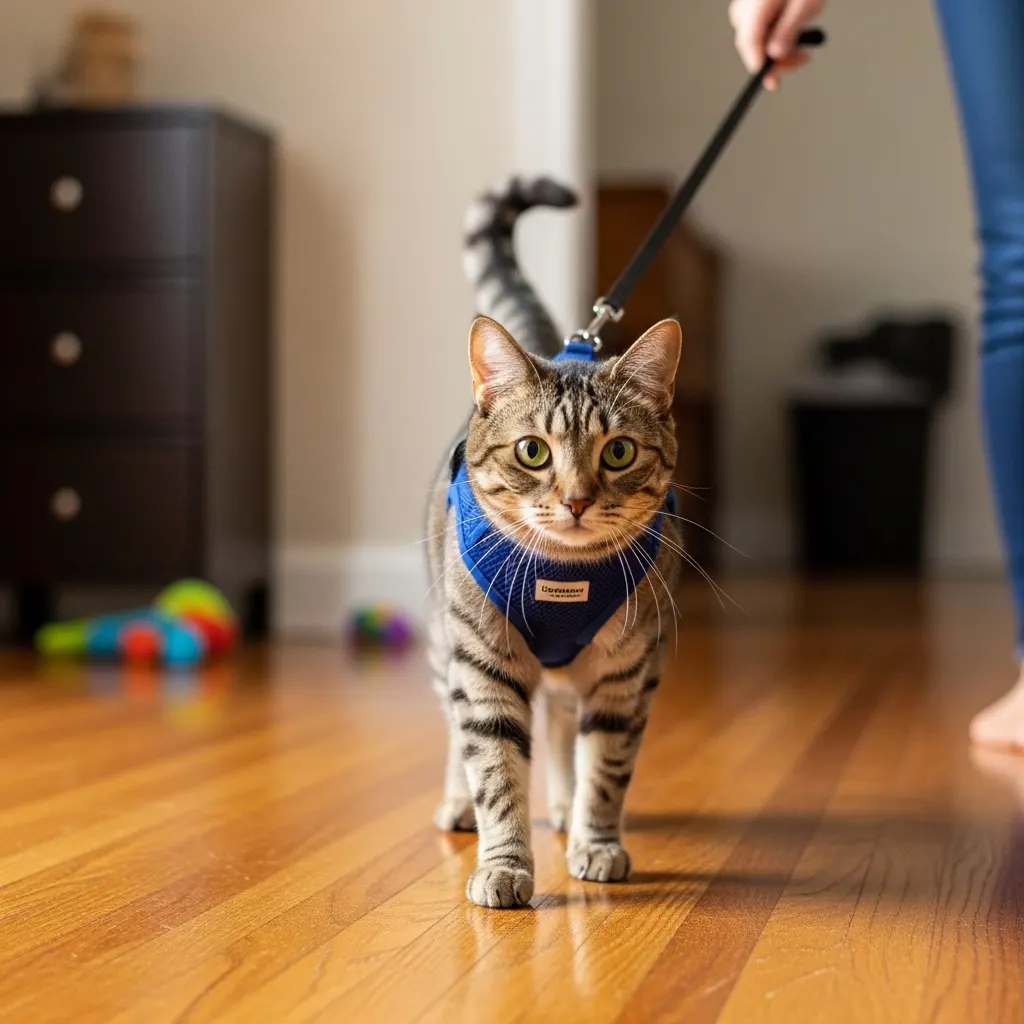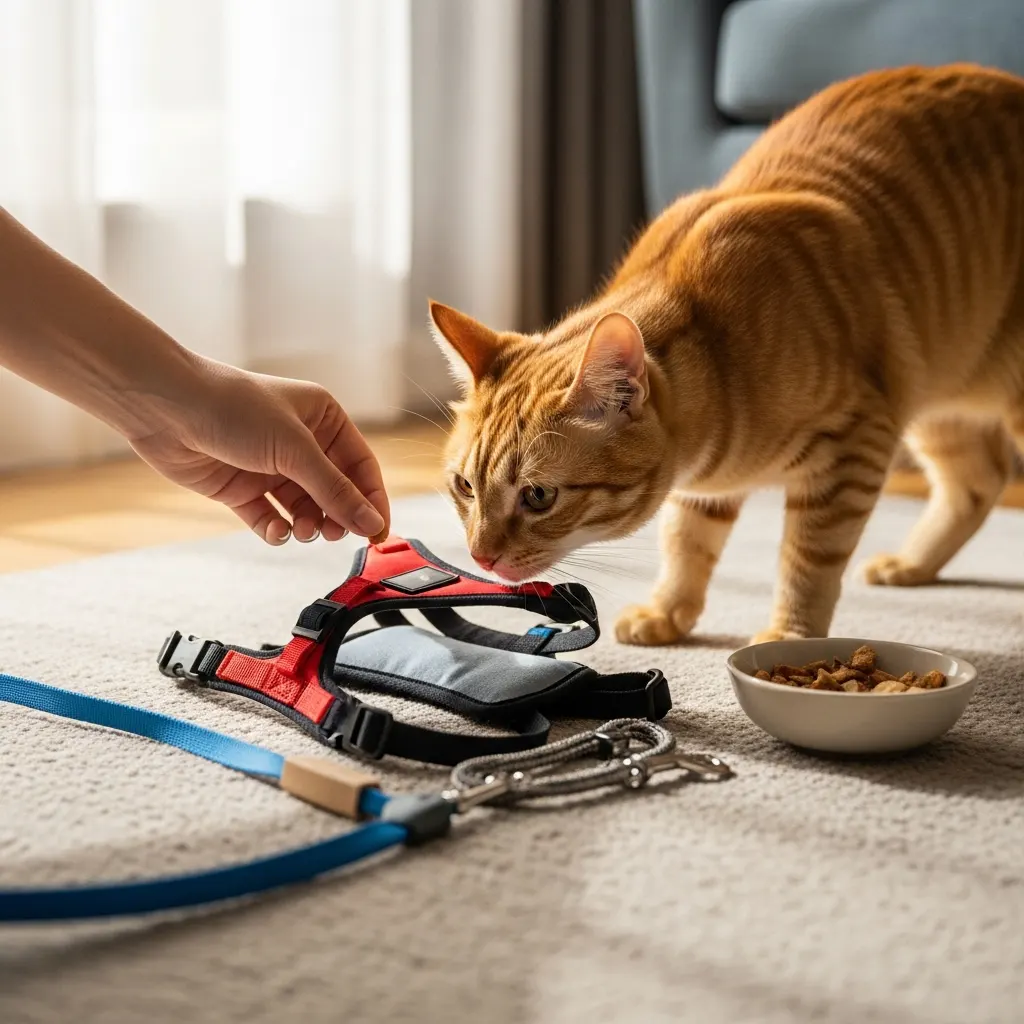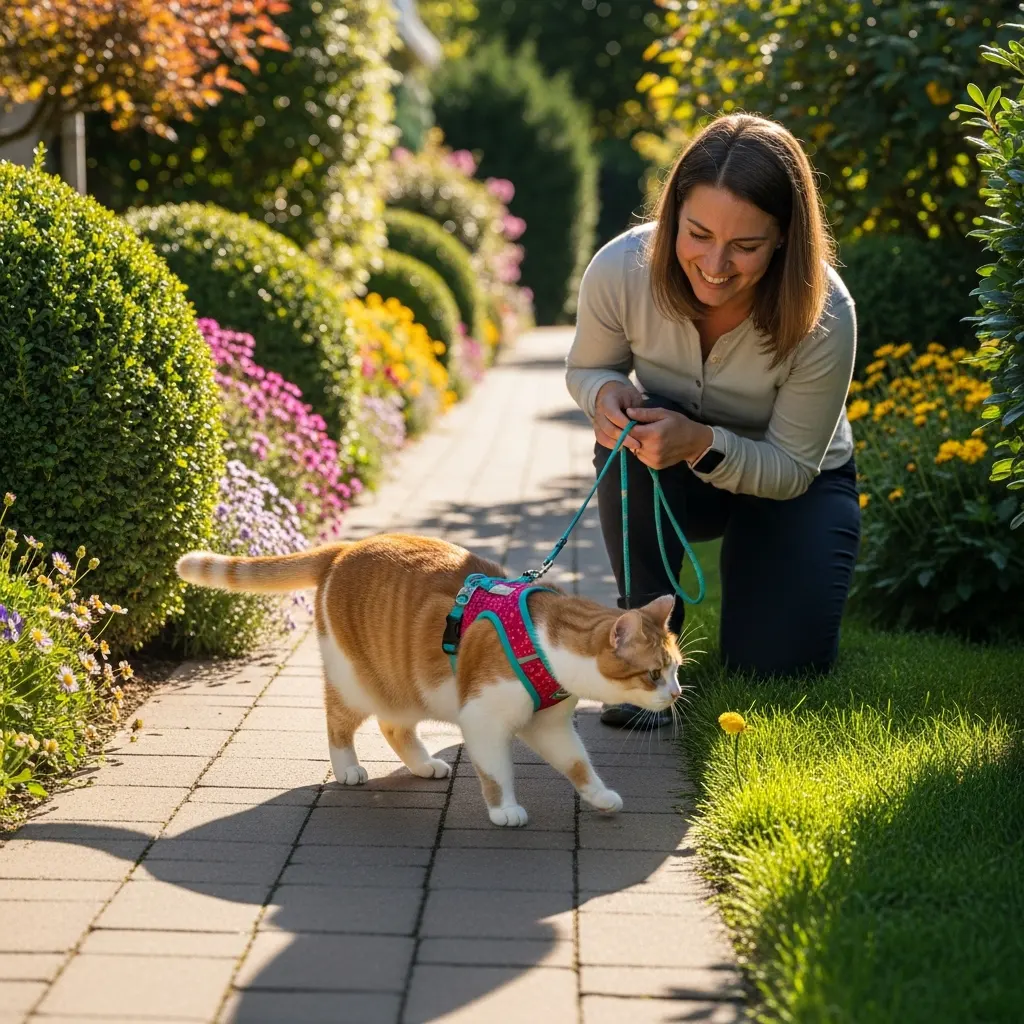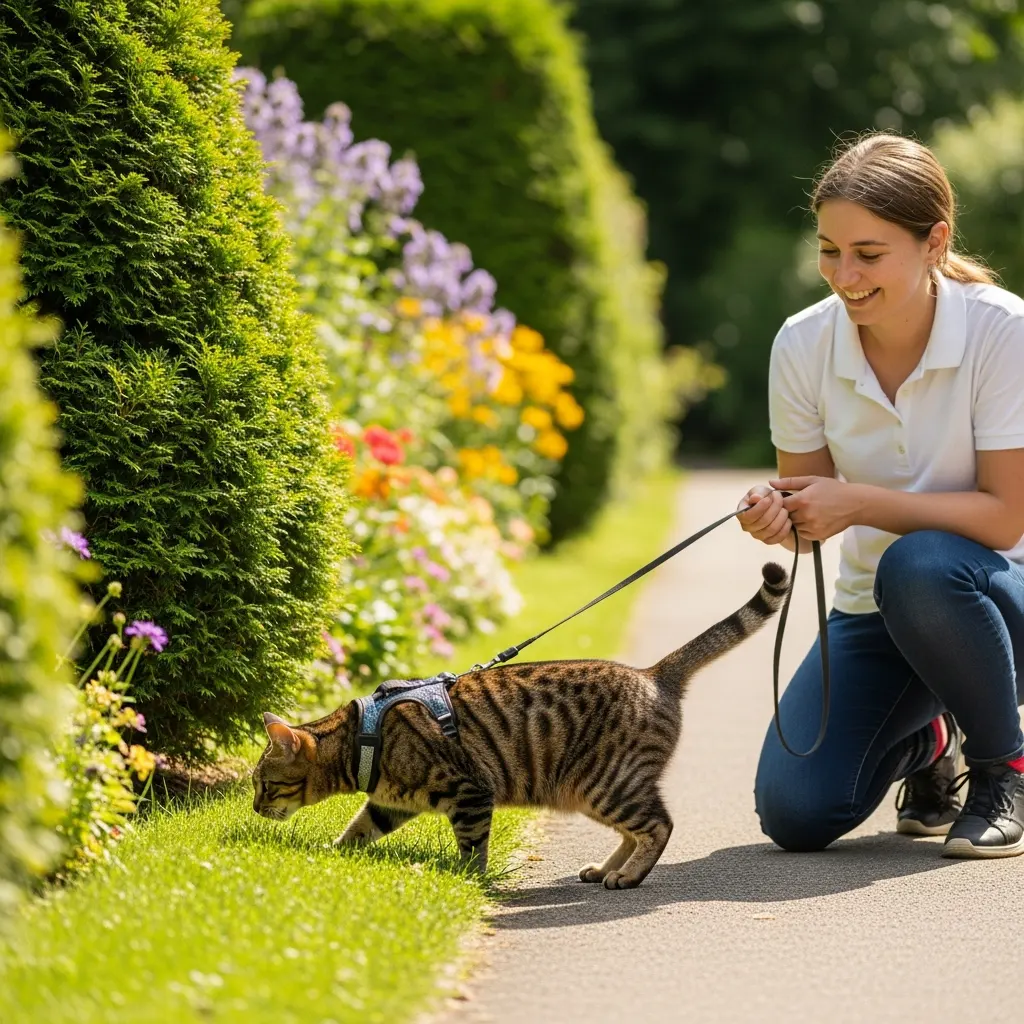Discover how to leash train your cat Benefits Your Cat and You
Leash training transforms indoor cats into confident explorers, providing mental stimulation and safe outdoor enrichment. Learning how to leash train a cat helps curb boredom and destructive behaviors by offering controlled adventures beyond the living room. When you know how to leash train my cat, you create opportunities for bonding, exercise, and sensory exploration without risking escape or injury.
Outdoor walks on a harness and leash can satisfy your cat’s natural curiosity—sniffing grass, listening to birds, and feeling new textures underfoot. For indoor-only cats, this controlled exposure prevents them from feeling deprived of a broader world. Knowing how to train a cat for leash ensures you’re setting realistic expectations: slow, gradual sessions that respect your cat’s boundaries foster trust and enjoyment rather than stress.
Ultimately, leash training isn’t just about the mechanics of snapping on a harness or guiding a line—it’s about reinforcing your cat’s confidence. By taking the time to teach your cat to walk beside you, you enrich their life and strengthen your relationship. Whether you’re asking how to leash train my cat or how to harness train an adult cat, embracing the process thoughtfully leads to rewarding, shared experiences.
Summary – Key Points
Benefits of Leash Training: Provides mental stimulation, safe outdoor enrichment, and strengthens the bond between you and your cat.
Choose the Right Harness: Use a feline-specific, adjustable vest-style or H-style harness in breathable material with secure buckles.
Familiarize Indoors First: Leave the harness and leash in view, reward your cat for sniffing and exploring them off-body before any fitting.
Gradual Harness Introduction: Drape the harness loosely, then fasten for short sessions, pairing each step with treats and praise.
Indoor Leash Practice: Attach a lightweight leash and let your cat drag it under supervision; use treats to encourage forward movement and reward success.
Short, Consistent Sessions: Keep training to a few minutes, 2–3 times daily, ending on a positive note with play or cuddles.
Safe Outdoor Transition: Start at the doorstep, choose quiet times and locations, allow your cat to set the pace, and never force movement.
Read Body Language: Look for relaxed tail sways and slow blinks as positive signs; pause or retreat if ears flatten, fur bristles, or vocalizations indicate stress.
Troubleshoot Issues: Adjust fit or style if your cat freezes or spins; practice indoors to untangle leash problems; desensitize to outdoor noises gradually.
Maintain and Reinforce: Inspect gear regularly, continue brief weekly walks, and reward your cat to solidify leash-walking as a fun, confidence-building routine.
Selecting the Right Harness: Fit, Style, and Comfort

Choosing the correct harness is the first step in your journey. Look for a design specifically for felines—vest-style or H-style harnesses distribute pressure evenly, preventing escape and discomfort. If you’re wondering how to harness train my cat, pick an adjustable harness that snugly fits around your cat’s chest and shoulders without restricting breathing or movement.
Adult cats often require different sizes or styles than kittens. When learning how to harness train an adult cat, measure the widest part of your cat’s torso and check manufacturer guides. Soft, breathable materials like padded nylon minimize chafing, while quick-release buckles allow fast removal if your cat panics. A lightweight, escape-proof harness builds confidence from the start.
Finally, let your cat inspect the harness off the body. Place it near their favorite napping spot or sprinkle catnip on it to foster positive associations. Familiarization begins long before the first fitting—and asking how to train a cat for leash means understanding that a secure, comfortable harness is the foundation of successful leash training.
Introducing Your Cat to the Harness Inside the Home

Initial harness introductions should be calm and stress-free. Begin by leaving the harness in a visible area where your cat can sniff and investigate at leisure. Offer treats and gentle praise whenever they approach it—this rewards curiosity and eases anxiety. Positive reinforcement makes a big difference when exploring how to leash train a cat.
Once your cat seems comfortable near the harness, gently drape it over their back without fastening. Let them wear it loosely for a few minutes, using treats to distract and reward. Gradually increase the duration each day, ensuring you’re not forcing the fit. Learning how to harness train my cat at their pace builds trust and prevents negative associations.
When you feel your cat is comfortable with the harness on, practice fastening and unfastening the clips. Keep sessions short—two to three minutes—and follow with play or petting. Over several days, your cat will learn that the harness isn’t a constraint but a signal for fun and exploration when you decide to attach the leash.
Practicing Harness Wear and Indoor Leash Handling
With the harness securely fitted, it’s time to introduce the leash. Attach a lightweight, short leash indoors first, allowing your cat to drag it around under supervision. This helps them get used to the feeling of being tethered without pressure. Watch for signs—if your cat freezes or spins, gently guide them forward with treats.
Encourage forward movement by placing treats a few steps away, rewarding progress as they follow their nose. Use an enthusiastic tone and soft praise: “good leash walk!” Gradually hold the leash handle and walk beside your cat, letting them set the pace. This interactive practice teaches how to leash train my cat by linking positive experiences with the harness-and-leash combination.
End each session on a high note. After a few successful minutes, remove the leash and harness, giving your cat a favorite toy or extra cuddle time. Consistent, brief sessions—two to three times per day—build muscle memory and confidence. Over a week or two, you’ll see your cat comfortable walking indoors on their leash, ready for the next challenge.
Transitioning to Outdoor Walks Safely
The great outdoors can be overwhelming at first. Start by opening your front door and allowing your cat to explore the threshold with leash in hand. Keep sessions under five minutes initially to prevent sensory overload. If your cat retreats, let them return indoors—forcing an outdoor walk risks long-term aversion to leash training.
Choose quiet, low-traffic times—early morning or late afternoon—and avoid loud noises or busy streets. Walk slowly, allowing your cat to sniff and observe from a safe distance. If they crouch or pull back, comfort them with calm praise and give them time to acclimate. Remember, successful walks come from patience, not speed.
Over successive outings, gradually extend your range to the sidewalk, garden, or courtyard. Let your cat choose the route, steering gently but never yanking. Wear gloves if needed to protect your hands. Soon, your cat will associate the outdoors with exploration and safety, mastering how to leash train a cat and enjoy enriching walks.
Reading Your Cat’s Body Language and Comfort Signals
Cats communicate their comfort through posture, tail position, and vocalizations. A relaxed tail held low or gently swaying indicates curiosity, while a puffed-up tail or flattened ears signal fear. Learning how to train a cat for leash involves observing these cues—if your cat hesitates, pause and offer reassurance instead of pressing forward.
Slow, blinking eyes and upright ears show contentment. Use these moments to reward your cat with soft praise or a treat. If your cat stops, sits, or lies down, they may need a break—never drag them along. Recognizing when to pause or retreat builds trust and ensures each walk remains a positive experience.
Vocalizations like soft meows or chirps often accompany interest. Respond with excitement to encourage engagement. However, loud yowls or hisses mean your cat feels unsafe—slowly retreat to a familiar spot and remove the harness if needed. Refining your sensitivity to these signals is key to successful, stress-free leash training.
Troubleshooting Common Leash Training Challenges
If your cat freezes in place, try dropping a trail of treats to coax movement. For cats that spin in circles, shorten the leash length and practice indoors until they no longer feel tangled. Should your cat bolt or dart unexpectedly, gently reel them in, reassure them, and resume at a closer-to-home location to rebuild confidence.
Persistent refusal to wear the harness often stems from fit issues. Recheck sizing, ensure straps aren’t chafing, and consider a different style—some cats prefer vest harnesses over figure-eight designs. When solving how to harness train an adult cat, small adjustments in harness type or leash length can make a world of difference.
Fear of outdoor stimuli—dogs, traffic, or loud noises—might require gradual desensitization. Play recordings of ambient sounds indoors while your cat wears the leash, pairing with treats. Slowly introduce real-world noises at a distance before approaching. With patience and strategic troubleshooting, most cats overcome initial hurdles and flourish on leash adventures.
Reinforcement, Maintenance, and Next Steps
Consistency is the cornerstone of lasting success. Continue brief practice walks several times a week, even after your cat masters the basics. This prevents regression and strengthens the habit of leash walking. Keep your leash and harness in a ready spot so training feels effortless rather than chore-like.
Regularly inspect harness straps and leash hardware for wear and tear, replacing any damaged components promptly. Praise and reward your cat periodically to reinforce the joy of shared adventures. Consider exploring new safe routes—parks, quiet trails, or enclosed gardens—to maintain novelty and excitement.
Once your cat reliably walks on a leash, you can introduce clicker training or agility toys for added enrichment. Teaching tricks like “sit” or “come” while on leash further strengthens communication. By following these steps—understanding how to leash train a cat, selecting the right gear, and honoring your cat’s comfort—you’ll unlock a world of safe, stimulating outdoor experiences for both of you.





